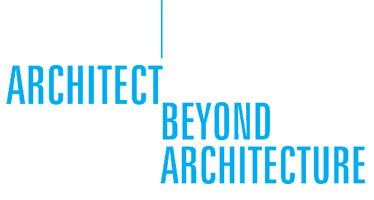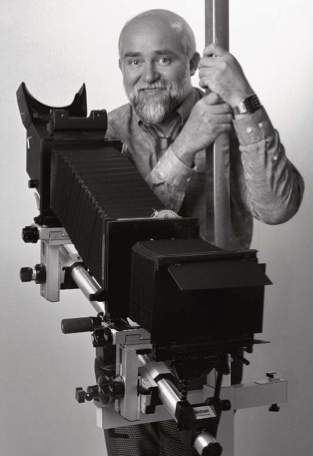
 |
|
|---|---|
I ended up at the Cracow University of Technology in 1962 after a
two year spell at the Warsaw Polytechnic. I did not know the city, although
I was born in the vicinity of Cracow. But owing to the fact that
all the local public attractions were concentrated on a small area, I
managed to find my way around very quickly. Cracow is one of these
places which are very easy to be liked. Six years of studies flashed by. After obtaining my diploma (supervised by professor Korski) I started work at the Investprojekt in Katowice and spent next seven years at this competitive and innovative office which in the meantime has grown into one of the most recognized in the region. We did mostly residential projects and related educational and commercial developments, but also numerous (open and closed) architectural competitions, with blessings of the director, who appreciated that even private undertakings of his employees added up to the prestige and the marketing value of the company. I managed to win two of these competitions, one with a team, for the Katowice city centre and the second, with my wife Elżbieta, for the central area of Siemia - owice. I also managed to receive high awards in a number of other competitions. Competitions were a valuable antidote for the ”slavery of the normative codes” and the limitations of the routine design work. At that time I also finished the Post-Diploma Studies in Urban Planning at the Warsaw Polytechnic University, worked on board of directors of SARP (Association of Polish Architects) and got married to the woman of my life Elżbieta, also a graduate of the Cracow Faculty of Architecture. In 1975 I was offered the post of the Deputy-Chief Architect of the Katowice Voivodship. Soon, due to the oppressive political system, I became disillusioned as to the possibility of improving the architecture and urban management of the region, so my activity turned into a sort of resistance movement against signing somebody else's decisions and bullying me into joining the ranks of the Polish United Workers’ Party. After over three years I felt I had enough, so I took a several month's leave which I used to prepare my photographic portfolio necessary to apply to ZPAF (the Polish Association of Artists Photographers), not so much because I looked for another source of income, but as to satisfy my ambitions in photography . I was bitten by photography bug at the age of 15, when I started taking pictures with a cheap plastic camera called “Scout” and other “gems” of the Soviet block technology. Then, during my studies, I got access to better equipment and could record my own and my friends' architectural work. I also actively participated in photographic societies, competitions and exhibitions, achieving some success, including the cover for a major British magazine. In 1979 my good friend and colleague Jurand Jarecki went to Algeria and he highly praised the charms of life there (mostly the climatic ones) and the relatively good remunerations. I decided to visit him. After some sightseeing, I found a job in the Oran firm CADAT. I got a post of the Chief Designer and a task to set up a city planning office in Mascara, near Oran. As the people’s regime in Poland liked to keep hostages, my wife could only join me after a year and a half, when the Solidarity movement “disoriented” somewhat the political rulers. With my two year contract finished, after developing the general plan of Mascara and a number of smaller projects (not without some problems with Algerians who notoriously didn’t like to settle their bills on time), we left for Paris. There we were faced with a dilemma : going back to Algeria, where we had good work prospects, seemed a socially risky option (we were right – 100 000 people got massacred there in ten years, after we left); we could go back to Poland, which was risky too (as it was highly probable that Jaruzelski would ask Russians for brotherly ”help”); France was a possibility, if it wasn't for the rampant immigration which could antagonize the society and the politicians against the newcomers regardless of their country of origin… In the end, we chose Canada. In February 1982 we settled on the Pacific coast, in Vancouver. Without knowledge of English, with French as a reserve (we could always move to Quebec as a last resort), we landed in the English-speaking part of Canada in order to master the nowadays lingua franca. It was not a walk in the park, as there was a total real-estate crisis and half of the architects were jobless. Taking this into account and having to make ends meet, my wife (who, by the way, returned later to architecture after having brought up our child) and I decided to set up an advertising photography studio, as it is easier to find a client with a few thousand dollars for pictures, than one with a few millions for architectural projects. The technical requirements in the profession were extremely high and costly, but after some time we managed to establish a studio, which became one of the best known and best equipped in the city, and which acquired an impressive customer list including major advertising agencies, publishing houses, industrial corporations, chain department stores and such. I have dealt with a wide range of subjects from fashion to portraits of the VIPs, from cars to jewelry, from architecture to fine art masterpieces, from dynamic action shots to food... It is a very interesting career, demanding though and with zero tolerance for error. What kind of influence did my architectural education and practice have upon my new career? The most important is something I would call “functional creativity”, which is conceiving and executing an aesthetic image that conveys the character of the object, is aptly addressed at the viewer and meets the functional and economic requirements of the customer. Roman Skotnicki Vancouver, May 2010 |
 photo by Elzbieta Skotnicka |

Copyright by Konrad Glos, Rafal Zub 2010








